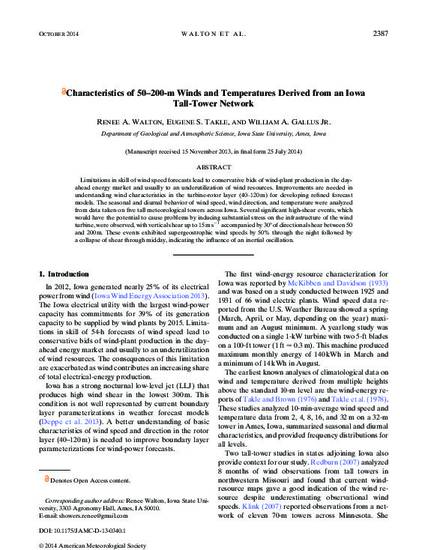
Limitations in skill of wind speed forecasts lead to conservative bids of wind-plant production in the dayahead energy market and usually to an underutilization of wind resources. Improvements are needed in understanding wind characteristics in the turbine-rotor layer (40–120 m) for developing refined forecast models. The seasonal and diurnal behavior of wind speed, wind direction, and temperature were analyzed from data taken on five tall meteorological towers across Iowa. Several significant high-shear events, which would have the potential to cause problems by inducing substantial stress on the infrastructure of the wind turbine, were observed, with vertical shear up to 15ms-1 accompanied by 30o of directional shear between 50 and 200 m. These events exhibited supergeostrophic wind speeds by 50% through the night followed by a collapse of shear through midday, indicating the influence of an inertial oscillation.
Available at: http://works.bepress.com/eugene-takle/6/

This article is from Journal of Applied Meteorology and Climatology 53 (2014) 2387, doi: 10.1175/JAMC-D-13-0340.1. Posted with permission.